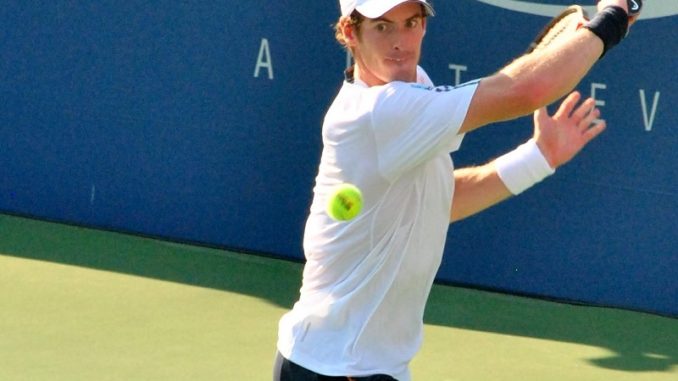
2020 we can all agree has been an eminently forgettable year. But as we navigated gingerly through its last hours with fingers aching from being interminably crossed, sport is the one thing that continued to provide succour at this trying time.
From the wet climes of Manchester to the soothing summer breezes of Melbourne, from the bio bubbles of the Emirati desert to the incongruous sight of golf club wielding western women on Saudi links, sport found a way to make us smile, and hope. With hope, came belief, and reason to dream of possibilities.
In these unusual times, one can therefore forgive a certain Andy Murray if on the long flight to Melbourne, and in quarantine over the two weeks that follow, he indulges in what others may perceive as fanciful thinking – the possibility of lifting the Australian Open Men’s trophy.
Don’t.
Don’t shut your browser.
Don’t swipe to your favoured app.
Read on for a moment, particularly if you believe in the stars – the celestial ones I mean.
Read on, even if you don’t.
Also Read:
So let’s first talk about the Christmas Star.
This is how NASA’s astronomer Henry Throop described it with an Athletics analogy: ‘You can imagine the solar system to be a racetrack, with each of the planets as a runner in their own lane and the Earth toward the center of the stadium.
From our vantage point, we’ll be able to see Jupiter on the inside lane, approaching Saturn all month and finally overtaking it, with the positions of Jupiter and Saturn being aligned in the sky about once every 20 years.’ The phenomenon that Throop describes, has just played out in front of our very eyes.
So why is the occurrence of the Christmas Star every twenty years, being invoked here? Because there are some similarities between this unusual planetary phenomenon and a wildcard winning a Grand Slam event.
The year was 2001, exactly 124-years since the first Wimbledon, the father of all Grand Slam events had been staged, and a but few weeks since the Christmas Star had been sighted in all its glory.
In those 124-years, not once had a wildcard entrant won the event. That year, everything would change.
The Wimbledon organisers decided to reward a three-time finalist whose best tennis, most connoisseurs of the sport agreed, was behind him. He had been struggling with a recurring injury that had largely kept him out of competition, and when he played, its recurrence ensured he wasn’t in contention for a title. As the Wimbledon draw was made, his ATP ranking was 125.
[the_ad id=”14063″]
Giving Goran Ivanisevic a wildcard, the generous benefactors at SW19 believed, was the best farewell gift they could offer to a man who had provided so much entertainment to the members and the paying public over the years. They, and the world of tennis, were unprepared for what would follow.
In the first round Ivanisevic met Frederik Jonsson and defeated him. Why is that significant? Because over the next two weeks, Jonsson would be the only one among the players that the man from Croatia defeated, who had not at some point in their career featured in the Top 4 of the ATP rankings.
To the utter disbelief of thousands of aficionados at courtside and millions of naysayers watching on television, Ivanisevic then marched past Andy Roddick, Greg Rusedski, Marat Safin, and Tim Henman before brushing aside hapless Australian Pat Rafter in the final.
He did that in front of one of the noisiest bunch of spectators on Centre Court in the history of Wimbledon.
Also Read:
Two decades on it might well be action replay time with a twist.
On the 8th of February 2021 when Andy Murray steps on to one of the lesser courts at Melbourne Park to face a ranked player he would once have played at the Rod Laver Arena, it will be a few weeks since the Christmas Star had been sighted again.
Like Ivanisevic, Murray is a wildcard.
The Croat had been runner up at Wimbledon thrice, the Scot has faltered at the final hurdle in Melbourne an incredible five times. Ivanisevic had been ranked 125 coming into Wimbledon, Murray is ranked 122 coming into the Australian Open. The similarities extend to the reasons why they both needed wildcard entries.
The Croat had a shoulder injury that had taken away the most potent weapon in his arsenal – his serve. The Scot’s game is built around his ability to anticipate and react quickly, transitioning from defence to offence with speed. His nagging pelvic bone injury has put paid to exactly that part of his game.
And yet, Andy Murray has continued to fight back with his dreams intact of adding the Australian Open to his cabinet where it would join the Wimbledon and US Open trophies that have long craved companionship from down under.
The Christmas Star has already been sighted, the planets aligned. The warning bells of fate have been rung for Novak Djokovic, Rafael Nadal and Dominic Thiem. Now it is up to the Knight from Scotland to whisk his prize away from under their disbelieving gazes.
May the games begin.